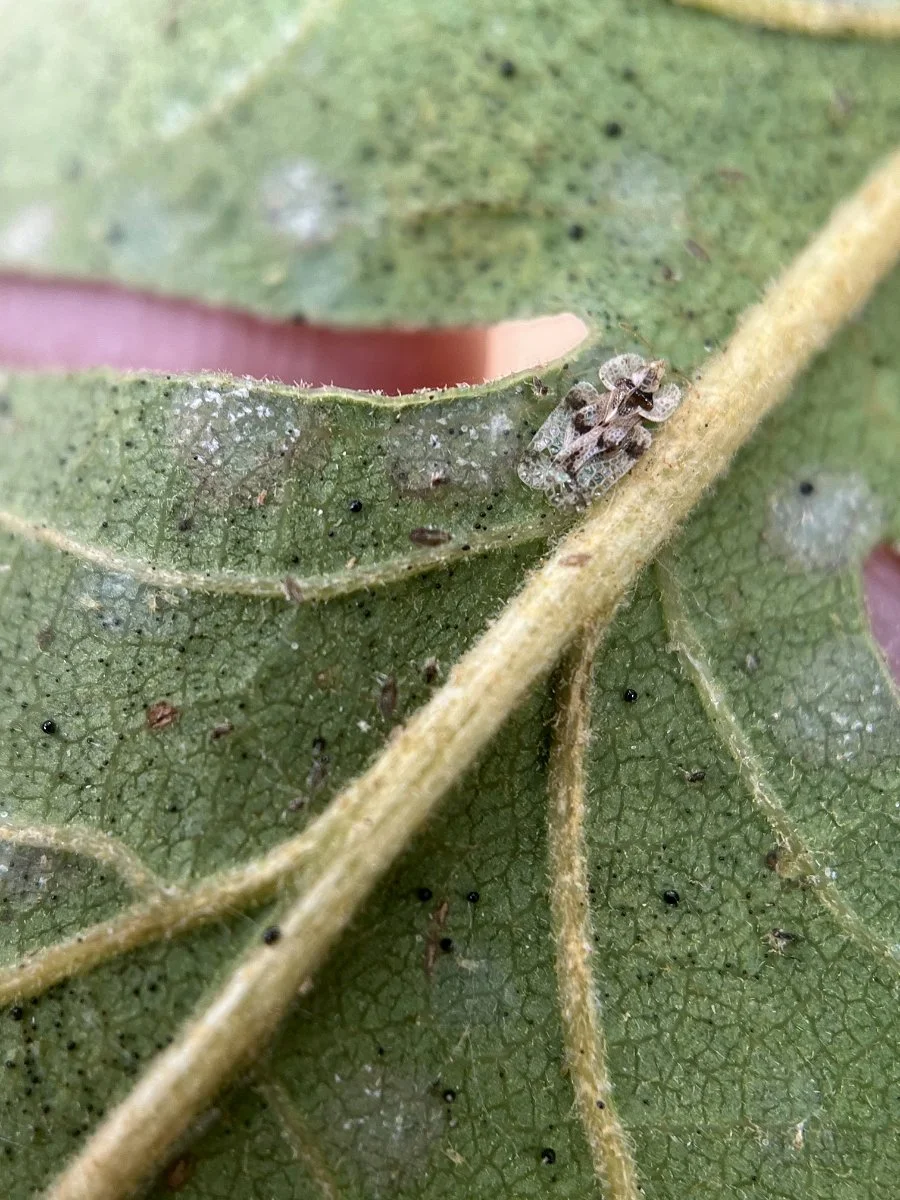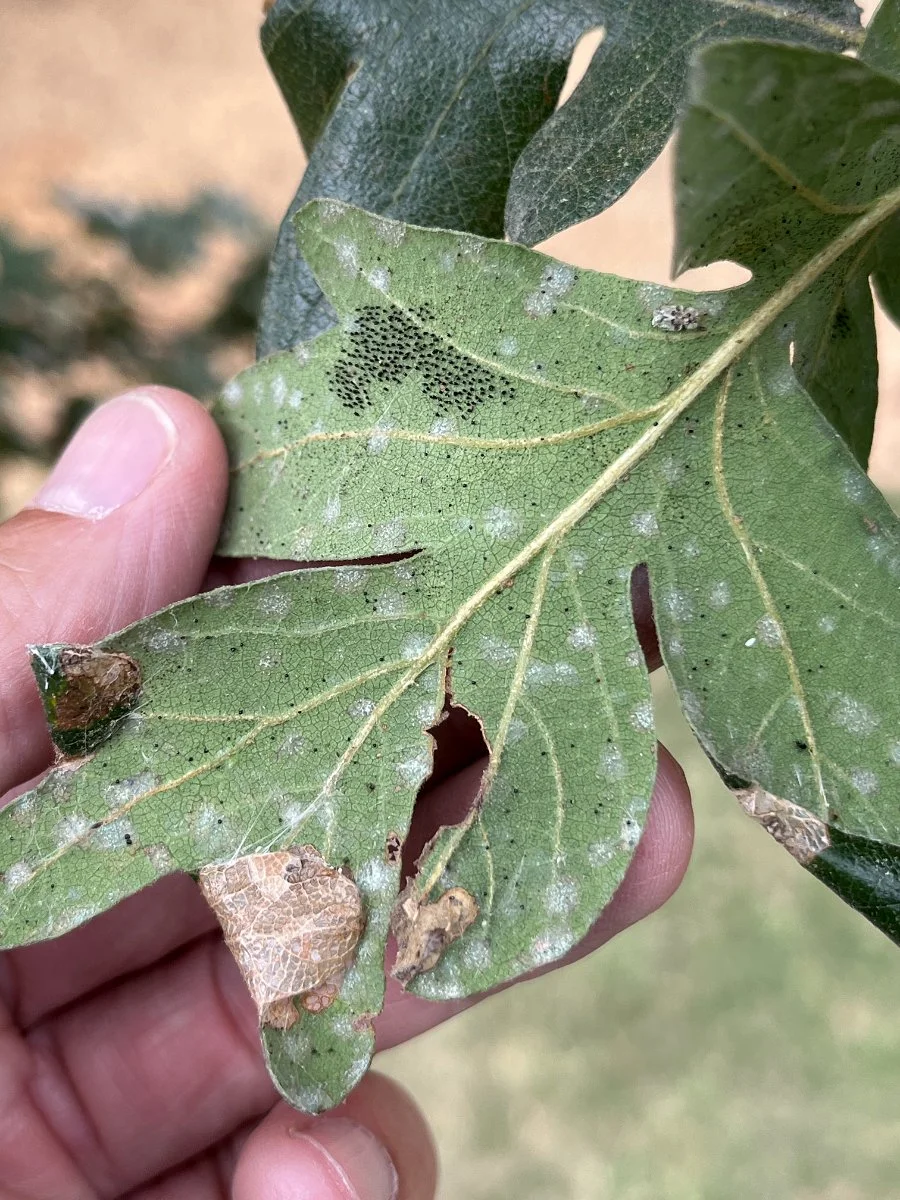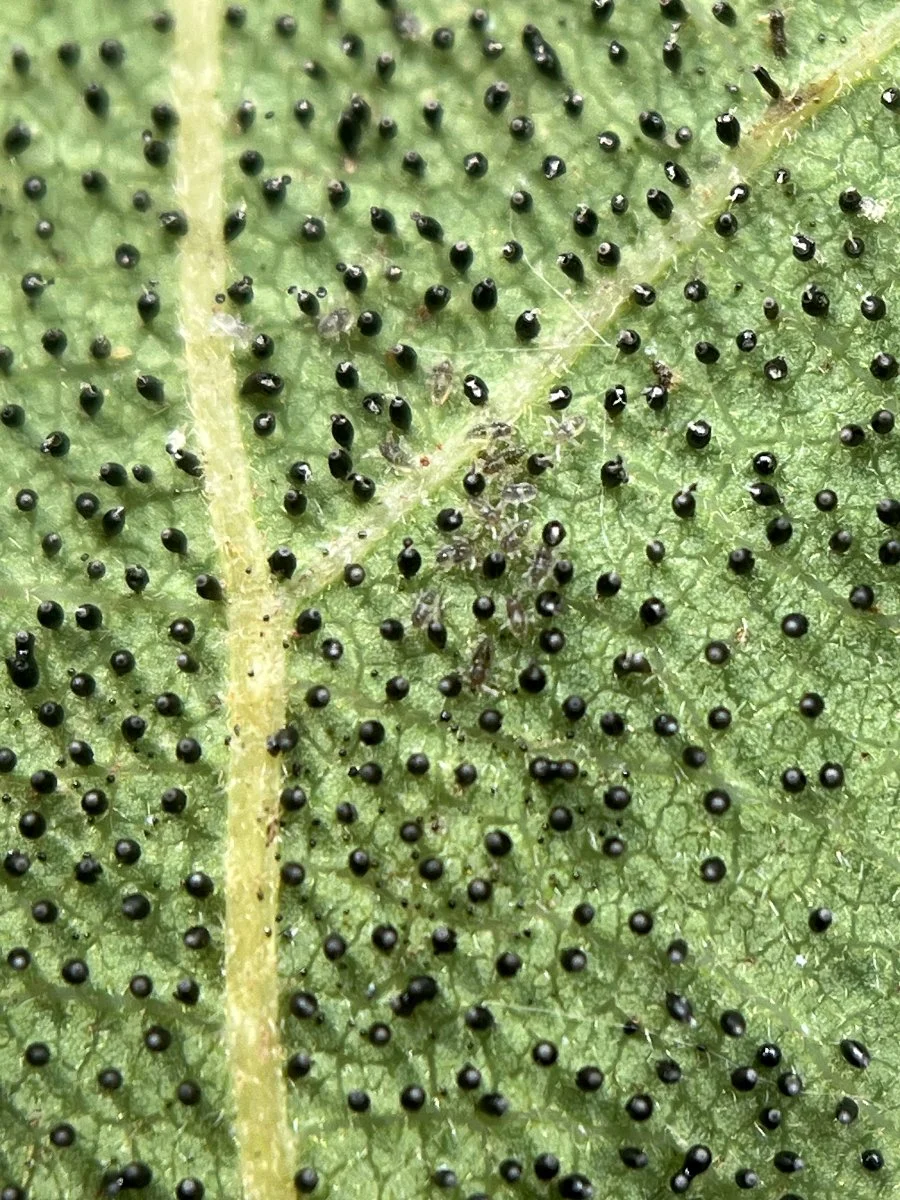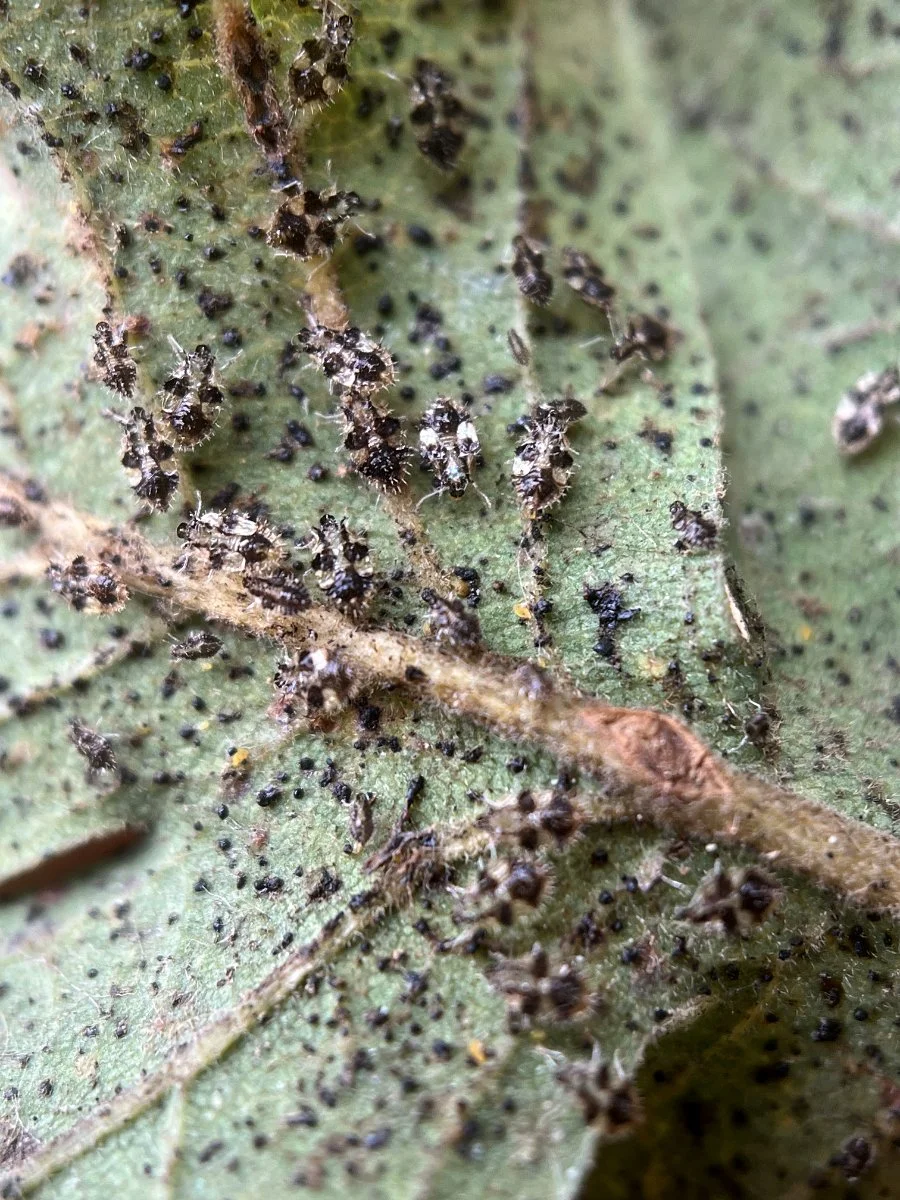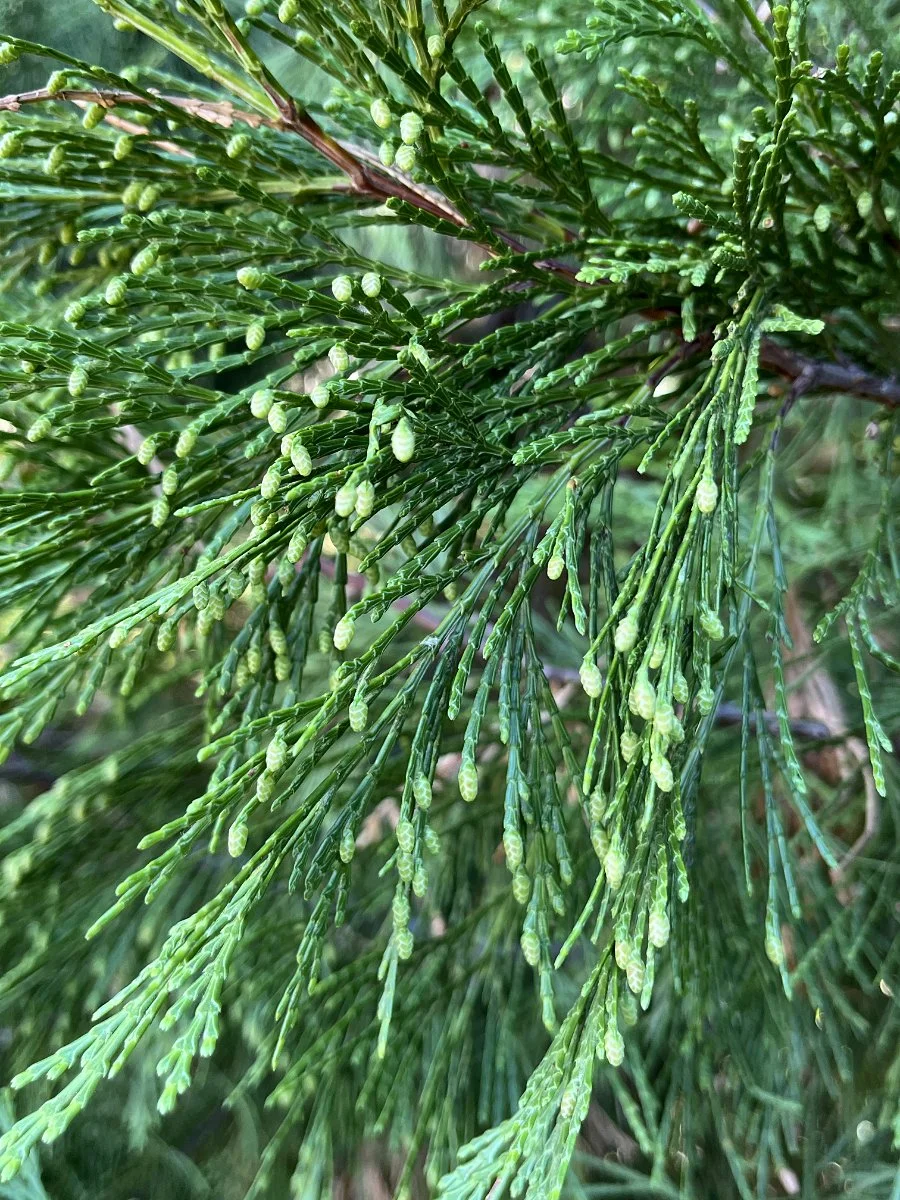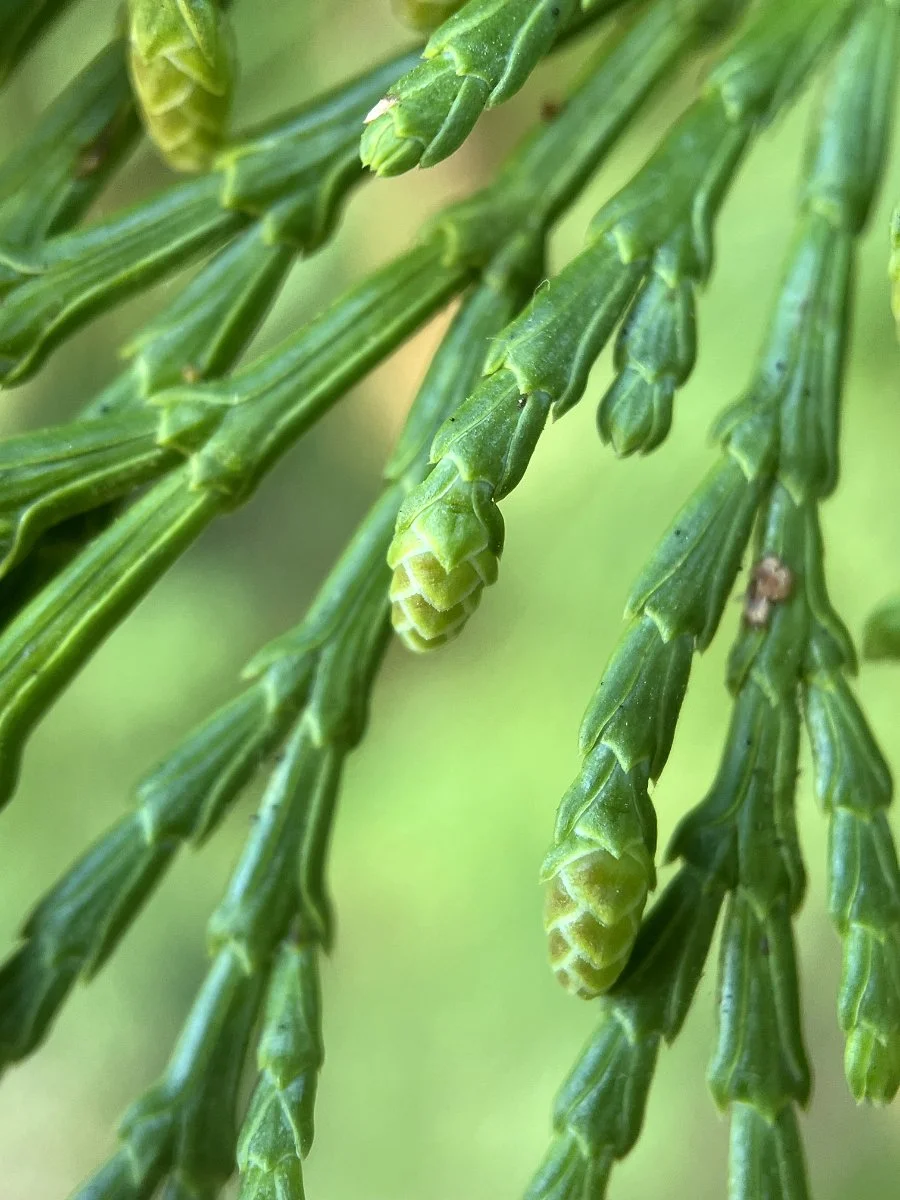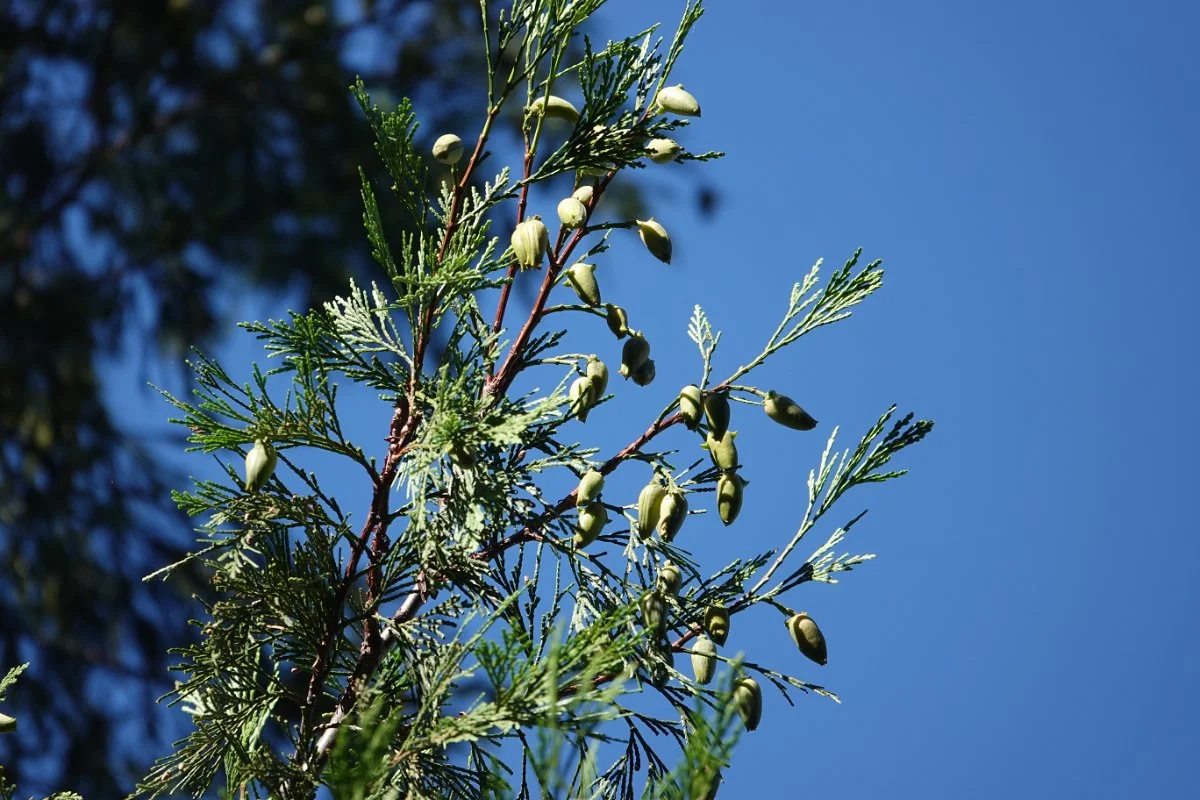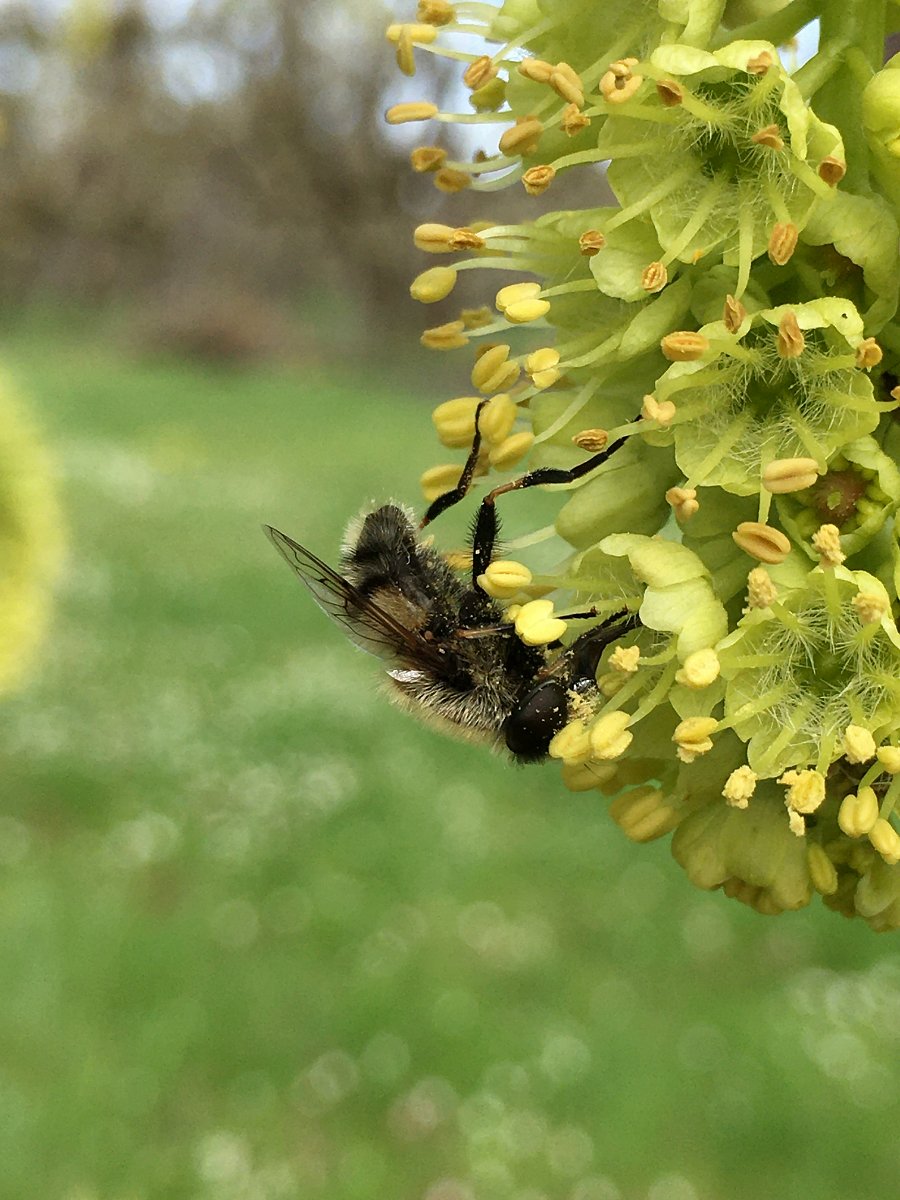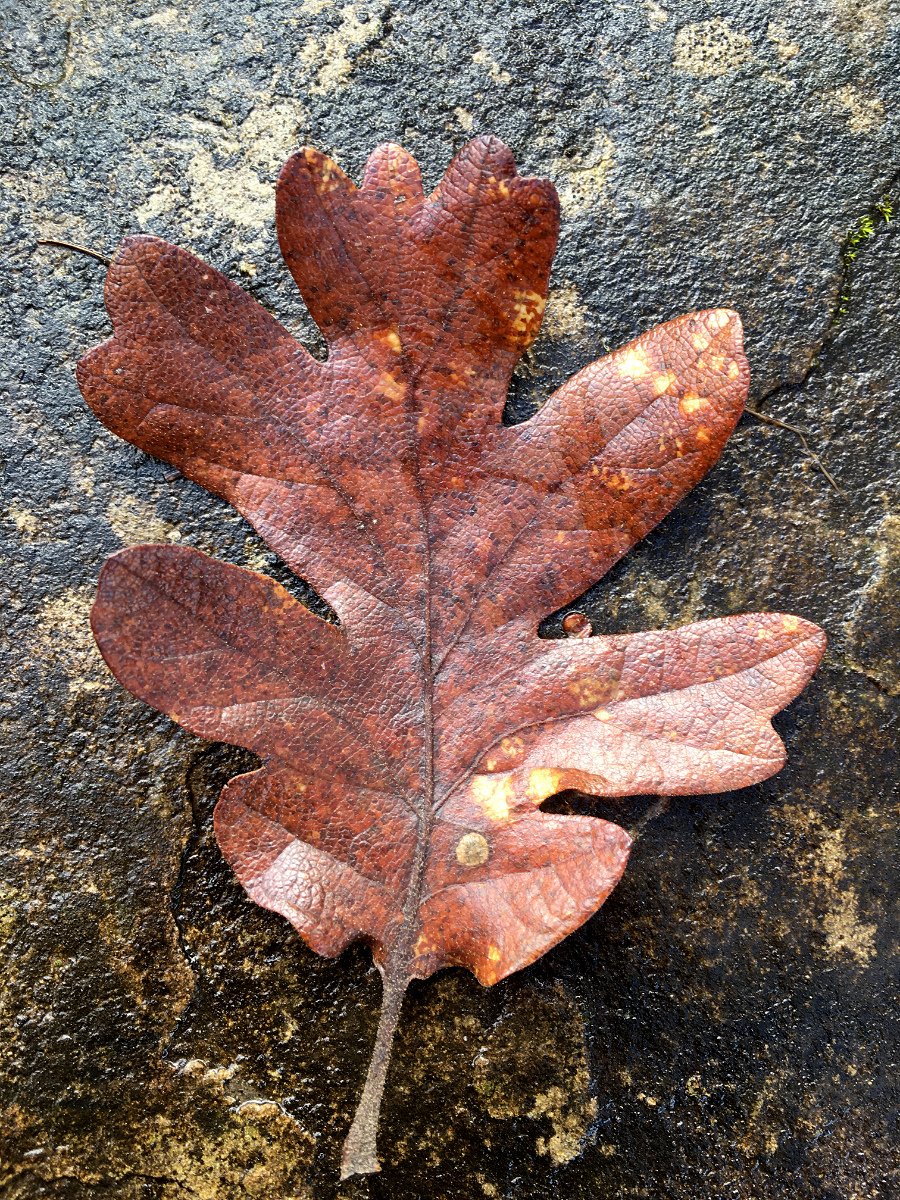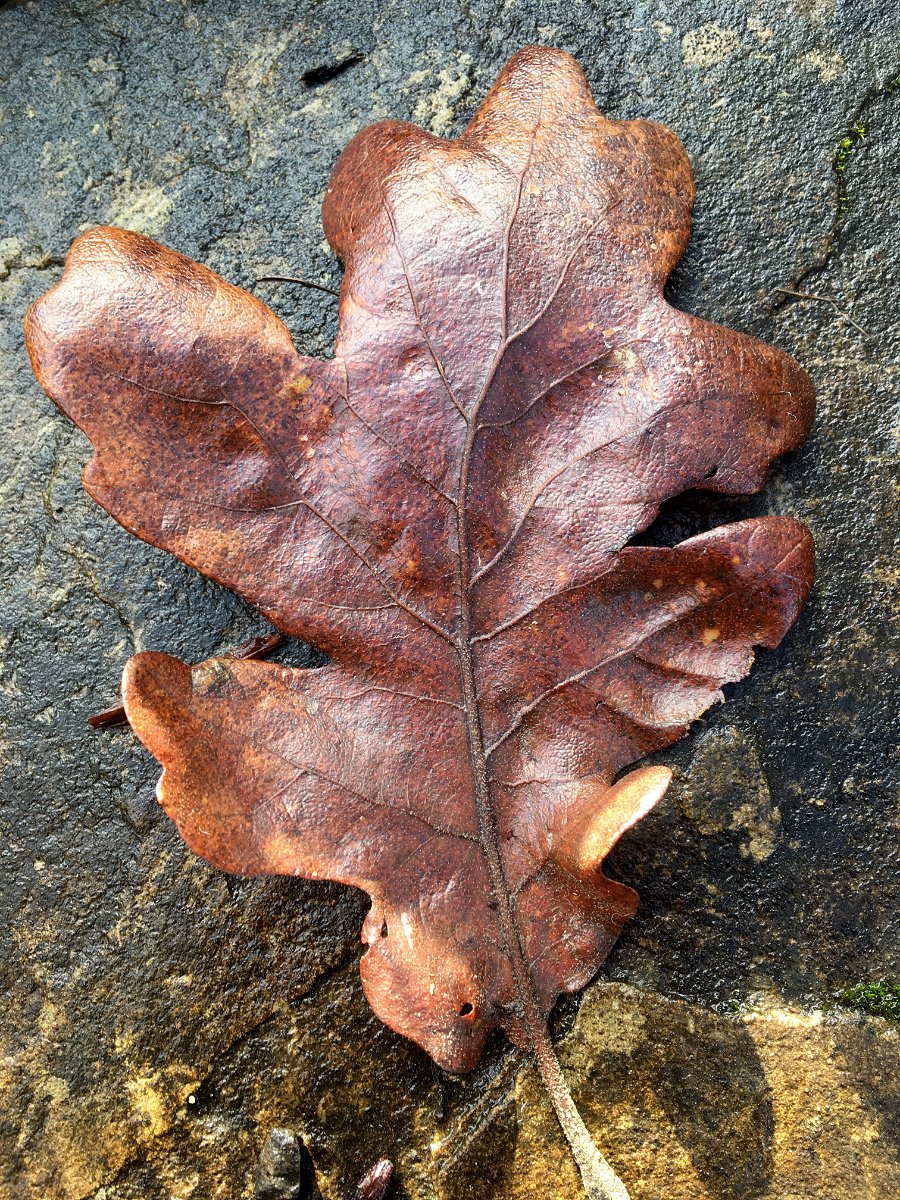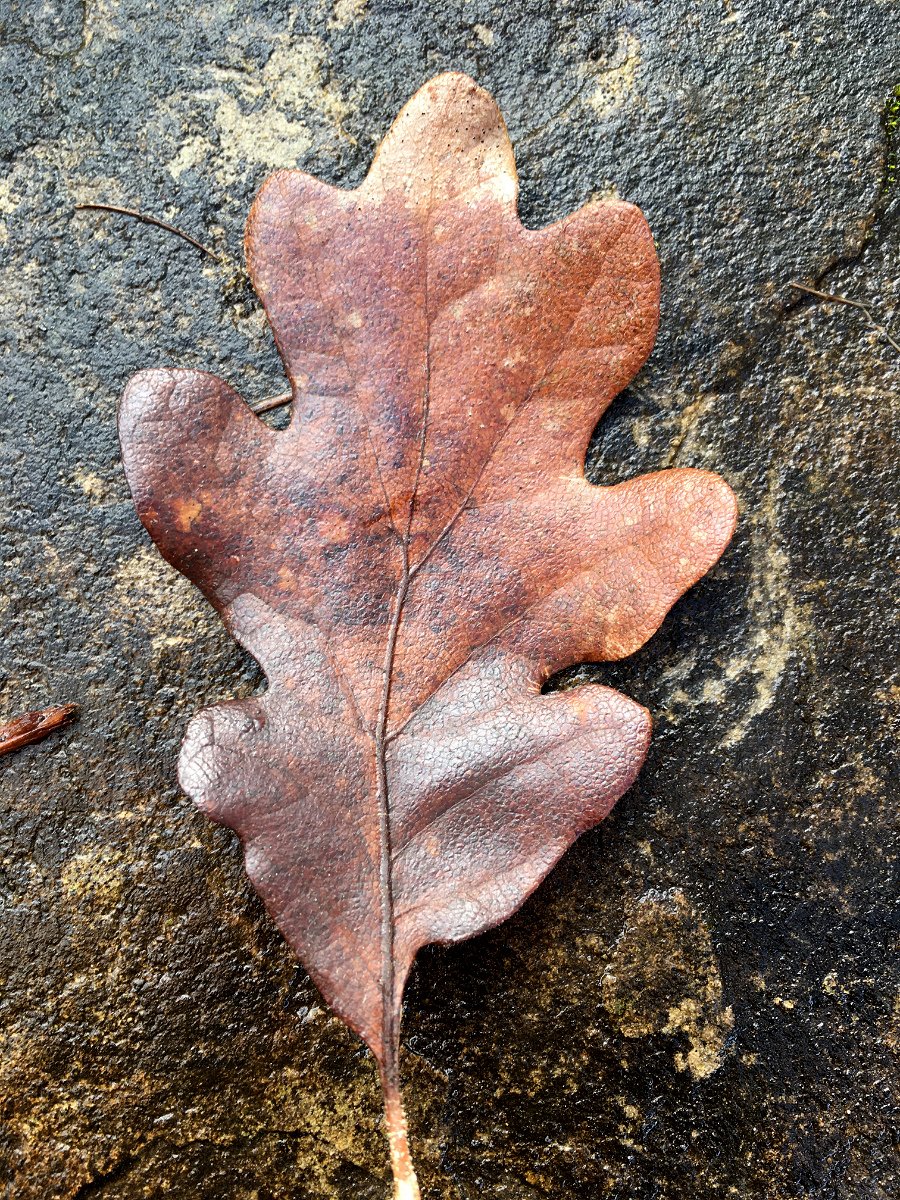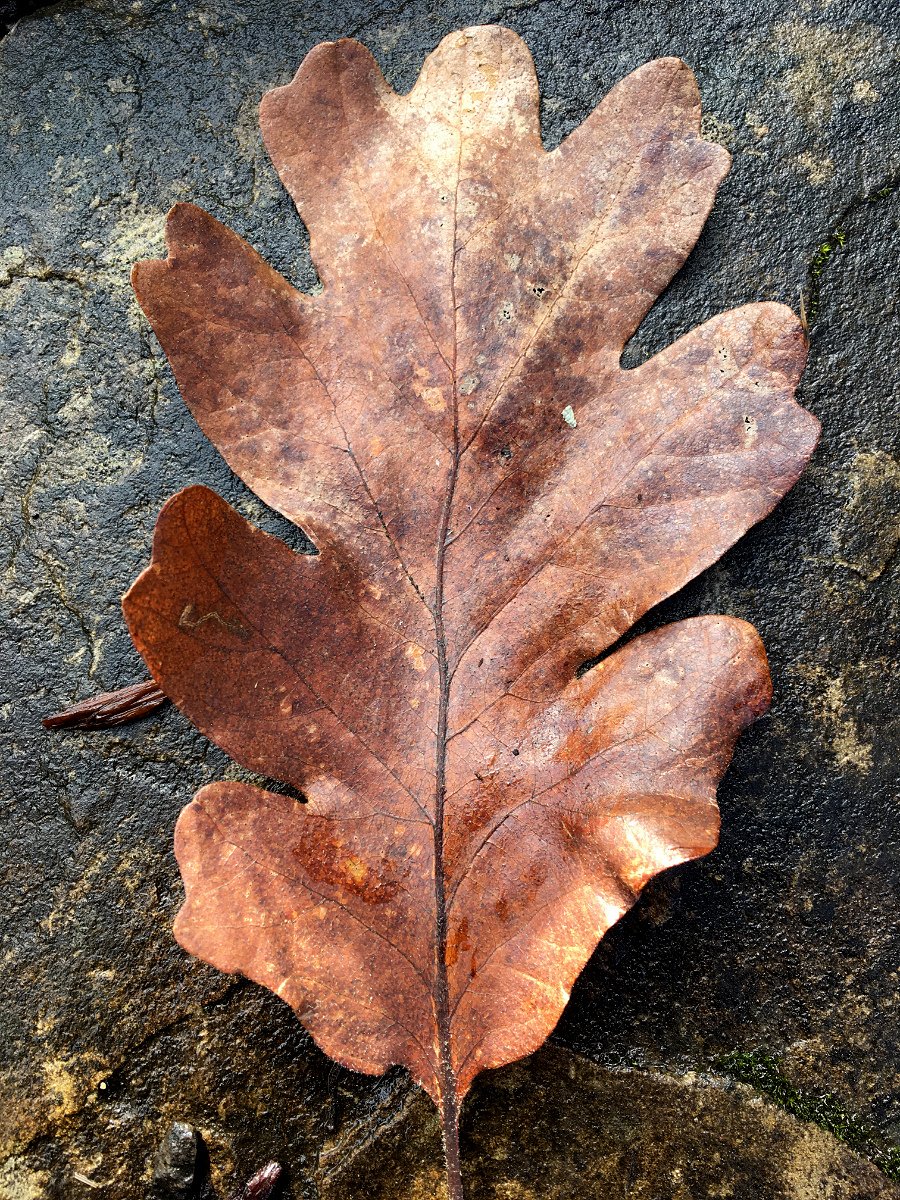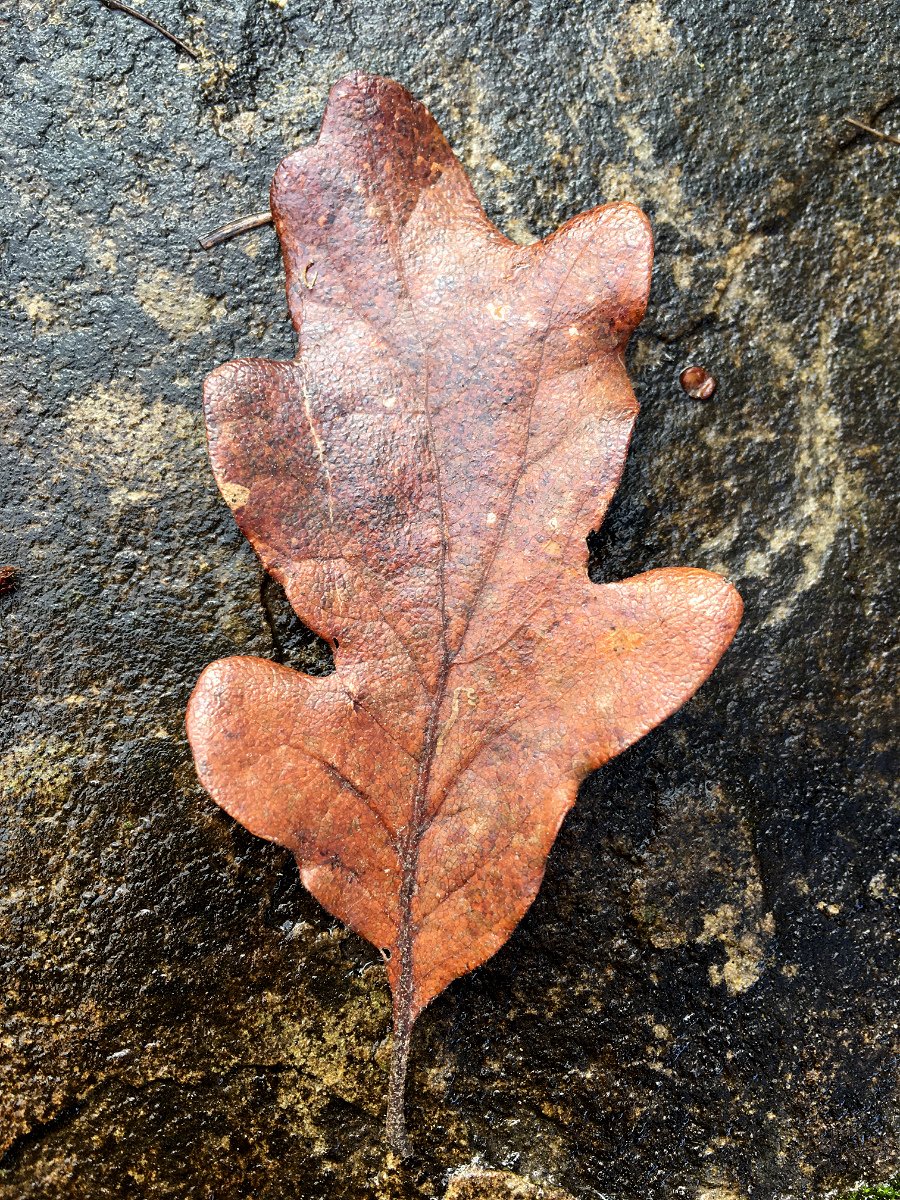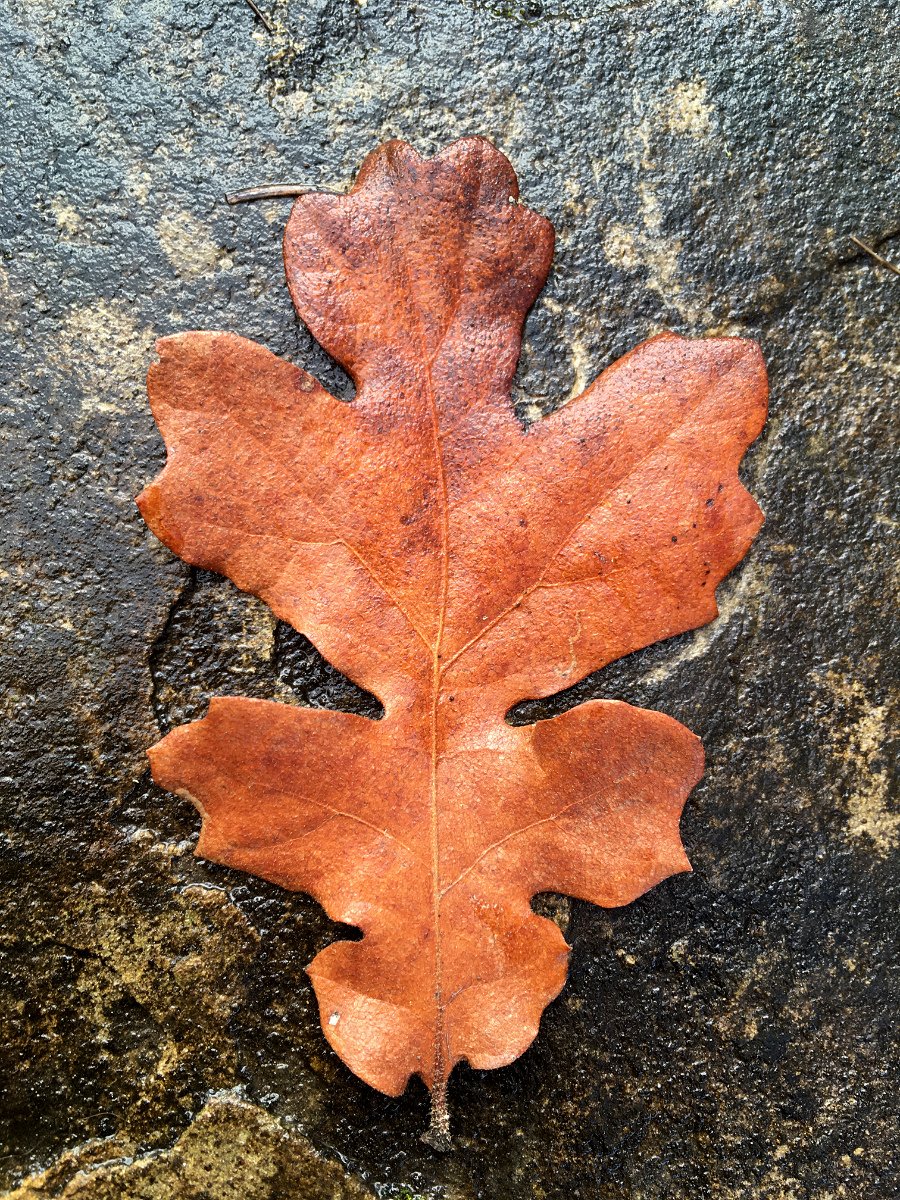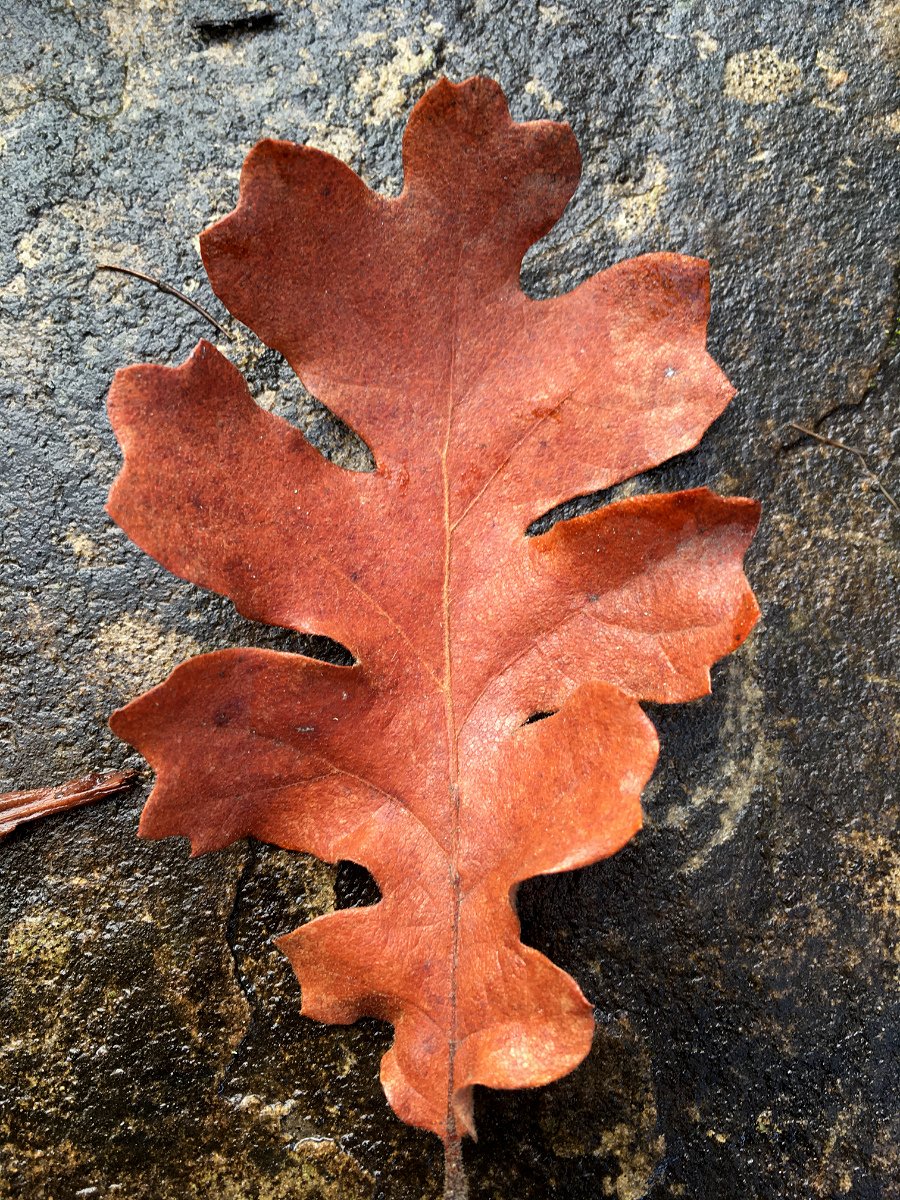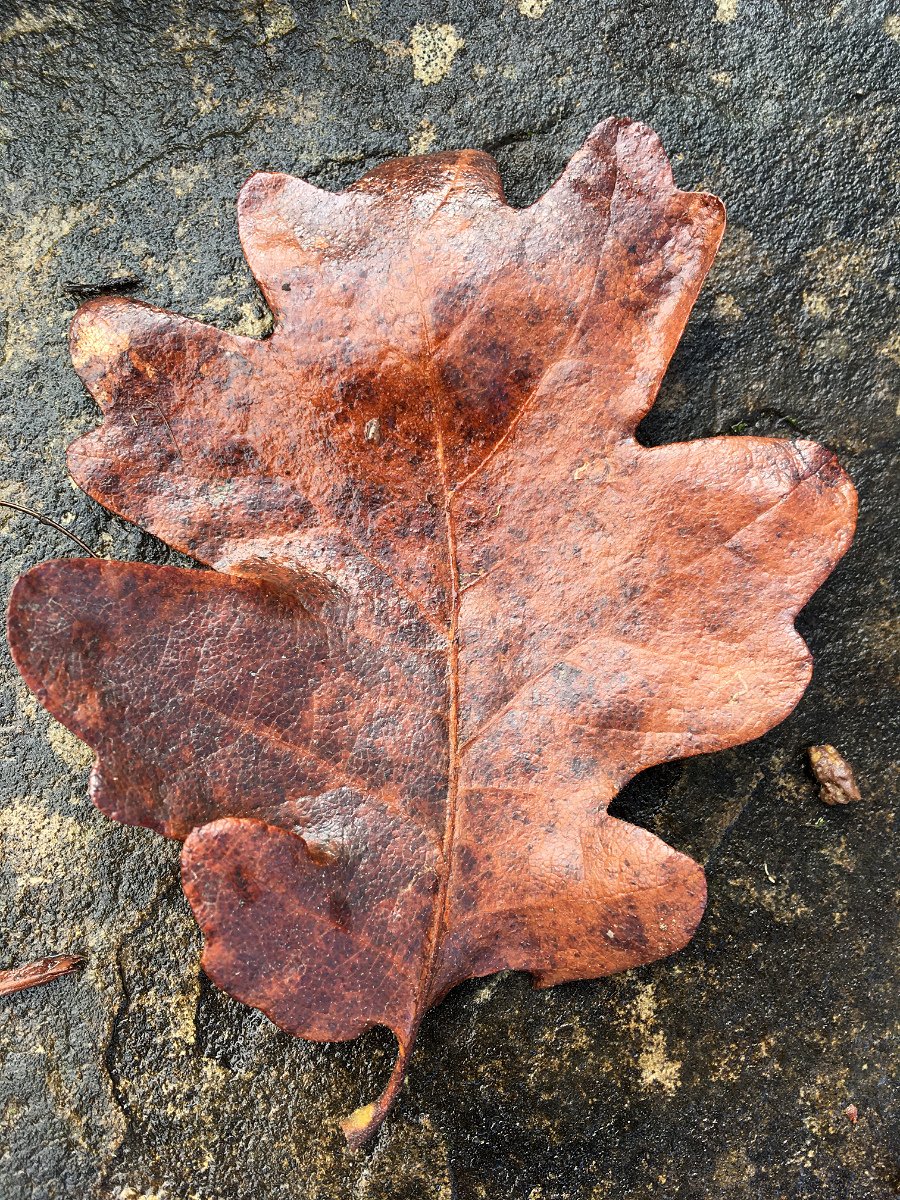Some of the Oregon White Oaks out at the arboretum are infested with lace bugs. Lace bugs live on the underside where they can be protected from the weather and predators. They have a piercing-sucking mouthpart that sucks out plant juices. This causes a splotchy or stippling yellow appearance on top of the leaves. Lace bugs usually feed on their preferred host plant.
From my observations, the eggs are black and are fairly neatly laid in a small group. The excrement of the lace bugs is also black and it can be confusing to tell the difference when the leaf becomes infested and messy underneath. When the eggs hatch, the nymphs are black and spiny. Lace bugs will go through several instars before becoming adults. The adults have lace-like wings and it is where they get their common name.
I didn’t find any information that suggests that lace bugs can be harmful to the health of the trees. That said, I am sure that it does cause a little stress to the trees. I imagine there is some decline in the amount of sugars made from photosynthesis because of the yellowing of the leaves and the reduction of chlorophyll in the leaves.
When you get to this time of the year, most deciduous leaves show damage from insects or from the dryness of summer weather. The rains will be a welcome sigh of relief this week.

